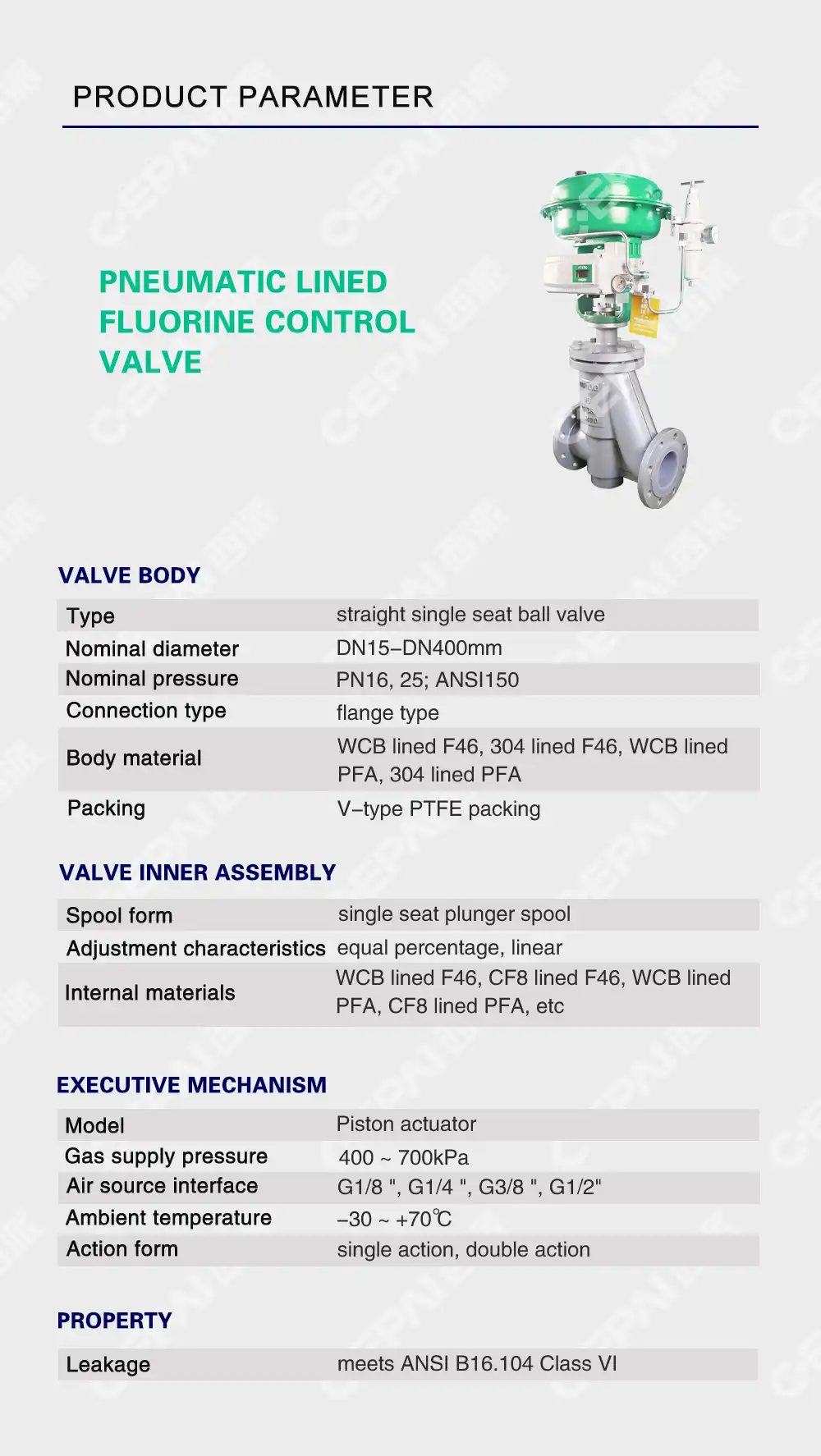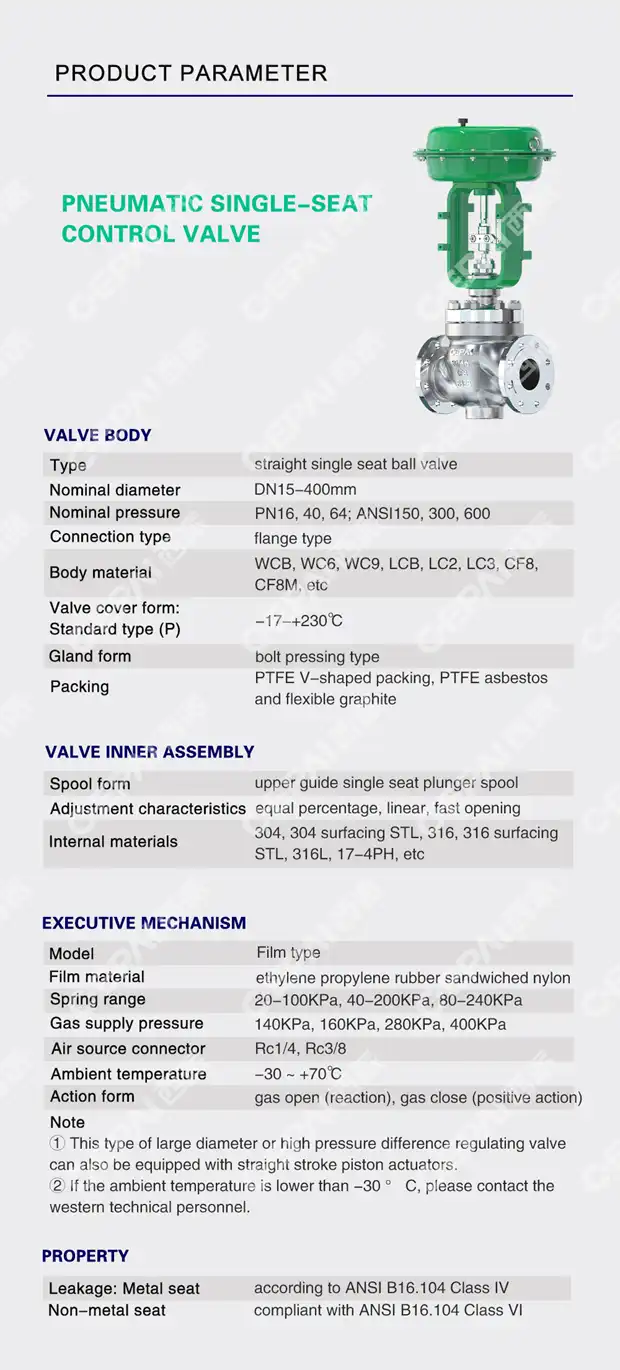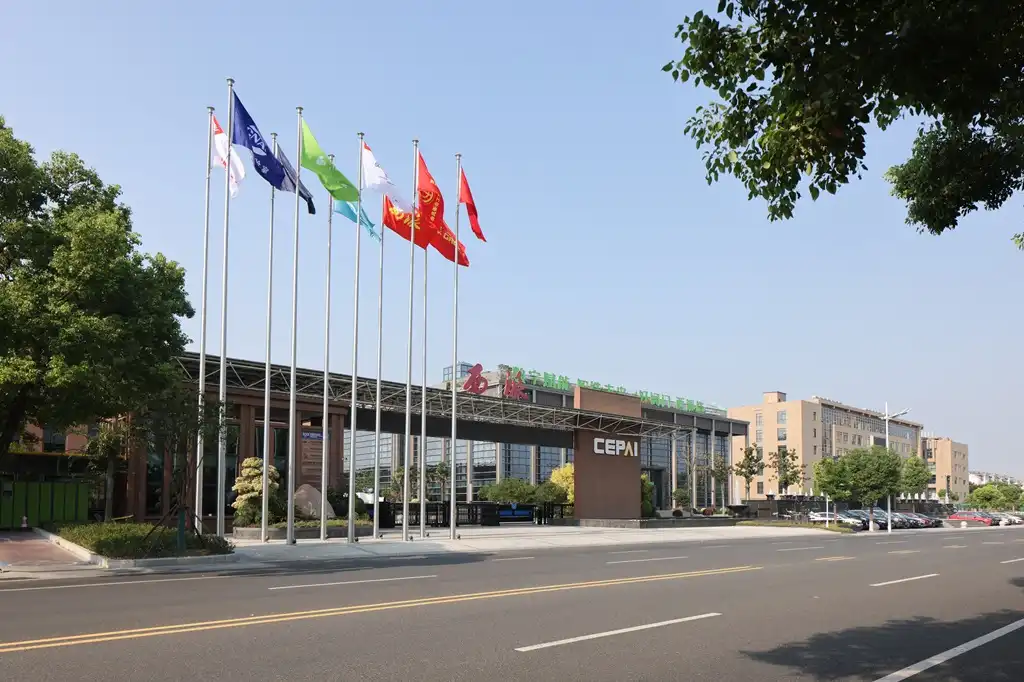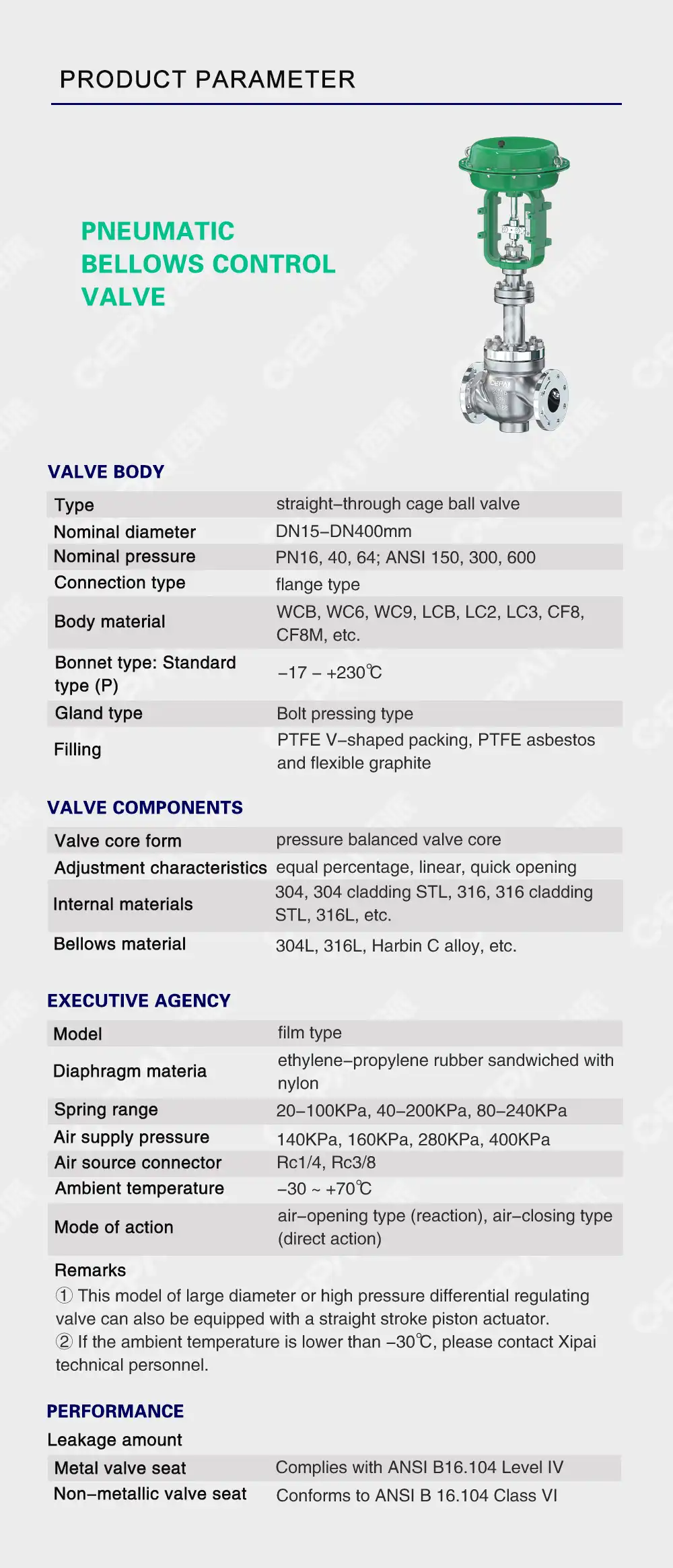Understanding Pneumatic Control Valve Technology
Basic Operating Principles
Pneumatic control valves operate on a straightforward yet effective principle. They harness the power of compressed air to actuate a valve mechanism, which in turn controls the flow of process media. The heart of the system is the actuator, typically a diaphragm or piston, which responds to changes in air pressure. As the control signal adjusts the air pressure, the actuator moves, causing the valve plug to change position relative to the valve seat. This movement precisely regulates the flow through the valve, allowing for dynamic control of the process.
Components and Their Functions
A typical pneumatic control valve assembly consists of several key components, each playing a vital role in its operation. The valve body houses the internal components and provides the pathway for the process fluid. The actuator, as mentioned earlier, converts pneumatic energy into mechanical motion. The valve trim, comprising the plug and seat, is responsible for the actual flow control. Positioners enhance the valve's accuracy by providing feedback on the valve's position. Accessories such as limit switches, solenoid valves, and pressure regulators further augment the valve's functionality, allowing for more complex control strategies and improved reliability.
Types of Pneumatic Control Valves
Pneumatic control valves come in various designs to suit different applications. Globe valves are widely used for their versatility and precise control characteristics. Butterfly valves offer excellent flow capacity and are ideal for large-diameter applications. Ball valves provide tight shutoff and are suitable for on-off control. Diaphragm valves excel in handling corrosive or high-purity fluids. Each type has its strengths, and selecting the right valve depends on factors such as process conditions, required control accuracy, and the nature of the media being controlled. Understanding these variations allows engineers to optimize valve selection for specific industrial processes.
Benefits and Applications of Pneumatic Control Valves
Advantages in Industrial Settings
Pneumatic control valves offer numerous benefits that make them a preferred choice in many industrial applications. Their inherent safety in hazardous environments, where electrical systems might pose risks, is a significant advantage. These valves boast rapid response times, crucial for processes requiring quick adjustments. They're also known for their reliability and longevity, often operating for extended periods with minimal maintenance. The simplicity of pneumatic systems translates to lower installation and operational costs compared to some alternatives. Additionally, pneumatic control valves can handle a wide range of operating conditions, from extreme temperatures to corrosive environments, making them versatile solutions across various industries.
Key Industries and Applications
The versatility of pneumatic control valves makes them indispensable across a spectrum of industries. In the oil and gas sector, they're crucial for wellhead control, pipeline regulation, and refinery operations. Chemical processing plants rely on these valves for precise control of reactions and separation processes. The food and beverage industry uses them for hygienic control of ingredients and packaging processes. In power generation, pneumatic control valves play a vital role in boiler control and turbine regulation. They're also extensively used in water treatment facilities, pharmaceuticals manufacturing, and pulp and paper production. Each industry leverages the unique capabilities of pneumatic control valves to enhance process efficiency, product quality, and operational safety.

Case Studies and Success Stories
Numerous case studies highlight the transformative impact of pneumatic control valves in industrial settings. For instance, a major petrochemical plant implemented advanced pneumatic control valves in its distillation columns, resulting in a 15% increase in product yield and a significant reduction in energy consumption. In another case, a food processing facility upgraded to high-performance pneumatic control valves, leading to improved product consistency and a 30% decrease in waste. A water treatment plant's adoption of smart pneumatic control valves with diagnostic capabilities reduced downtime by 40% and cut maintenance costs by half. These success stories underscore the tangible benefits that well-implemented pneumatic control valve solutions can bring to diverse industrial processes.
Innovations and Future Trends in Pneumatic Valve Technology
Smart Valve Technologies
The integration of smart technologies is revolutionizing pneumatic control valves. Advanced sensors and microprocessors embedded within valve assemblies now enable real-time monitoring of valve performance, position, and health. These smart valves can self-diagnose issues, predict maintenance needs, and provide valuable data for process optimization. Digital communication protocols like HART, Foundation Fieldbus, and Profibus allow seamless integration with plant control systems, facilitating remote monitoring and adjustment. Predictive maintenance algorithms analyze valve behavior patterns, reducing unexpected downtime and extending equipment life. As industrial processes become increasingly automated, these intelligent pneumatic control valves are playing a crucial role in enhancing overall system reliability and efficiency.
Sustainability and Energy Efficiency
The drive towards sustainability is shaping the evolution of pneumatic control valve design. Manufacturers are focusing on developing valves with lower air consumption and improved energy efficiency. Advanced sealing technologies and innovative actuator designs are reducing air leakage and minimizing the energy required for valve operation. Some new models incorporate energy recovery systems, harnessing the potential energy of compressed air to further reduce overall energy consumption. Additionally, the use of eco-friendly materials in valve construction and the development of low-friction components contribute to longer service life and reduced environmental impact. These advancements not only lower operational costs but also align with global initiatives for reducing industrial carbon footprints.

Integration with Industry 4.0 and IoT
The advent of Industry 4.0 and the Internet of Things (IoT) is opening new frontiers for pneumatic control valve technology. Valves are becoming integral parts of interconnected industrial ecosystems, contributing to and benefiting from the wealth of data flowing through smart factories. IoT-enabled valves can communicate with other process equipment, adjusting their operation based on holistic system data rather than isolated parameters. This interconnectivity facilitates more sophisticated control strategies, optimizing entire production lines rather than individual processes. Furthermore, cloud-based analytics platforms can aggregate data from multiple valves across different sites, providing insights for global process improvement and equipment design enhancements. As these technologies mature, pneumatic control valves are set to play an even more pivotal role in the factories of the future.
Conclusion
Pneumatic control valves stand as cornerstone components in modern industrial automation, offering unparalleled precision, reliability, and versatility. Their ability to adapt to diverse applications, coupled with ongoing technological advancements, ensures their continued relevance in an evolving industrial landscape. As industries strive for greater efficiency, sustainability, and intelligence in their processes, the role of pneumatic control valves will only grow in importance. By embracing smart technologies, focusing on energy efficiency, and integrating with broader industrial IoT ecosystems, these valves are not just keeping pace with industrial evolution – they are helping to drive it forward, promising a future of more efficient, sustainable, and intelligent industrial operations.
Contact Us
Ready to elevate your industrial processes with state-of-the-art pneumatic control valve solutions? CEPAI Group offers cutting-edge valve technologies tailored to your specific needs, ensuring optimal performance, reliability, and efficiency. Our expert team is committed to providing you with solutions that drive productivity and sustainability in your operations. Contact us today at cepai@cepai.com to discover how our innovative valve solutions can transform your industrial processes.


_1746598538016.webp)



